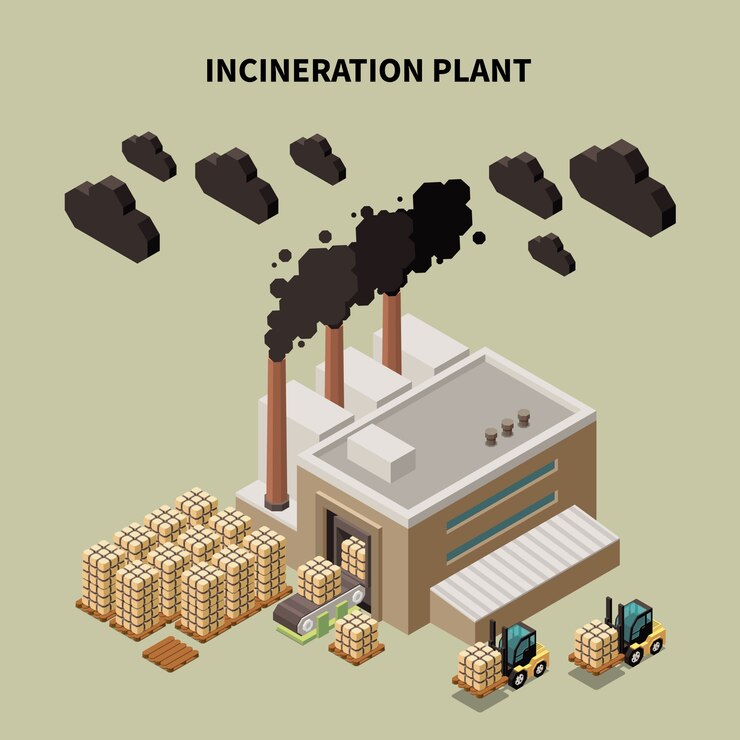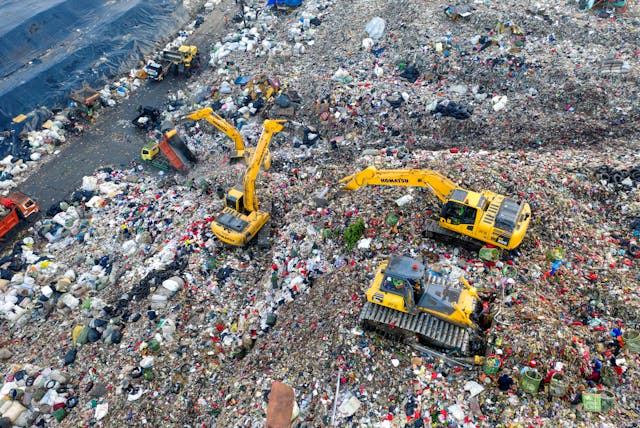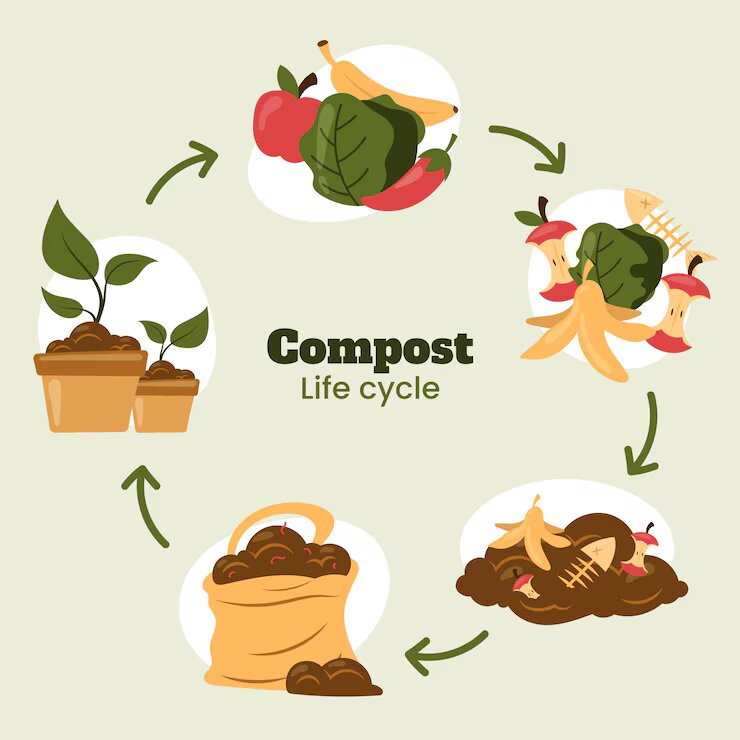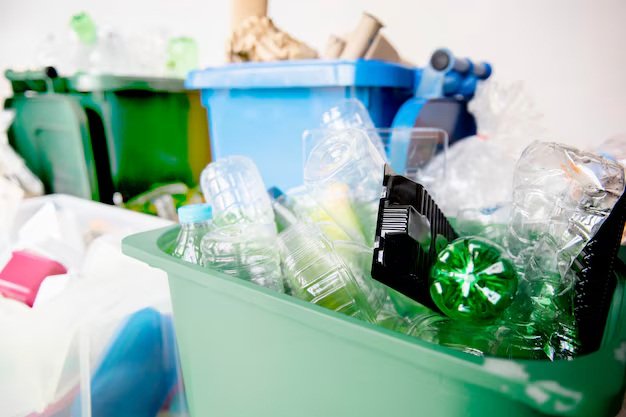How to Dispose Waste Properly: A Guide to Proper Waste Management
Proper waste disposal should be a common practice, yet most people choose to ignore it. Sometimes, individuals don’t care about how or where they dump their household trash, especially plastic items like bottles, bags, and disposable cutlery. This common household waste contributes significantly to environmental degradation.
In this guide, we will discuss proper waste management strategies and disposal techniques. We will also highlight practices that will help reduce waste in homes and encourage communities to adopt sustainable practices for a healthier environment.

In This Article
- What Is Waste Management?
- Why Waste Management is Important
- How to Dispose of Waste Properly
- #2. Incineration: A Controversial but Necessary Option
- #3. Landfills: The Least Preferred Option
- #4. Composting: Turning Waste into Valuable Resources
- Household and Community Composting
- Moving Toward a Zero-Waste Future
What Is Waste Management?
Waste management is the collection, transportation, and proper disposal of waste materials. According to the World Bank’s report on global waste, approximately 2.01 billion tons of municipal solid waste (MSW) are generated worldwide every year. The report states that at least 33% of the global waste generated is not managed in an environmentally safe manner. With a growing global population, waste generation is expected to reach 3 billion tons by 2050.
Waste is categorised into different types, which include:
- Solid waste: These are common household waste, commercial waste, and construction debris.
- Liquid waste: Include sewage waste, oil or other industrial fluids.
- Gaseous waste: Emissions from industrial processes, burning fossil fuels, and household gases pollute the environment.
Waste management is a sustainable approach to prevent environmental contamination and pollution. Household waste is often solid or liquid, while industrial waste and biomedical waste are often toxic to human health and require specialised treatment and disposal methods.
Why Waste Management is Important
Solid, liquid, or gaseous waste should be properly disposed of. Waste management is crucial for the environment as negligence in this area can lead to serious environmental, health, and economic problems. Poor waste disposal, especially in densely populated areas, leads to serious health issues. Practices such as burning plastic or dumping untreated waste into nearby water bodies cause air and water pollution.
A study conducted by Navarro Ferronat and Vincenzo Torretta (2019) has highlighted a direct correlation between poor waste management and public health crises, particularly in low-income communities. The study found that illegal waste disposal increased the prevalence of diseases like typhoid and cholera.
A UN report reviews that 8 to 10% of global greenhouse gas emissions are associated with waste management, specifically through methane emissions from landfill sites.
How to Dispose of Waste Properly
Let us walk you through four effective waste management techniques that have been widely adopted.
#1. Recycling: A Key to Sustainability
Recycling is an eco-friendly approach to reducing municipal solid waste. It’s one of the most effective ways to reduce waste while preserving natural resources and conserving energy. Recycling is a reliable process for reducing waste materials from plastics, glass, paper, metals, and electronic waste. It minimises the rate at which raw materials are extracted to make new products.
The Importance of Recycling
According to a UN report, the recycling of materials in 2018 reduced the equivalent of 193 million metric tons of carbon emissions in the United States alone.
Another study conducted by the Plastic Pollution Coalition (2022) discovered that recycling plastics reduced the level of plastic pollution in the ocean. The study emphasises that recycling can mitigate the environmental impact of the 8 million tons of plastic waste dumped in the ocean every year.
Steps for Effective Recycling
- Segregation of waste: Recycling starts with sorting waste materials. Common household recyclables, plastics, paper, metal, and glass should be separated from organic waste before they are sent to a recycling facility.
- Cleaning recyclables: Contaminants should not be on items intended for recycling. Make sure to clean all recyclables before throwing them into a recycling bin.
- Support local recycling programs: Communities should participate in local recycling initiatives to promote healthier living. Incentivising waste picking can also encourage efforts to reduce waste accumulating in landfills.
Recycling’s Impact on Local Communities
Local waste pickers in developing countries are making a significant impact by reducing waste in landfills. A 2021 report from the Global Alliance for Waste Pickers shows that informal recycling initiatives contribute to the livelihood of over 20 million people globally. Waste pickers selling recyclable materials like glass and metals not only earn an income but also reduce solid waste littering the environment.
However, recycling is not without its challenges. A Lack of proper facilities, especially in low-income communities, and public misconceptions are some of the factors limiting the effectiveness of recycling. To address these challenges, environmental organisations and the government must educate the public about proper waste management practices.

#2. Incineration: A Controversial but Necessary Option
Incineration refers to burning solid waste at a high temperature to reduce its volume and generate energy. While it is an effective method for waste reduction, it remains controversial due to its potential environmental impact. Continuous burning of solid waste generates greenhouse gases such as carbon dioxide and nitrogen oxides.
Advantages of Incineration
Incineration of solid waste is widely practised because it reduces the volume of waste by 90%, making it a considerable option in densely populated areas with limited landfill space. Additionally, Incineration plants can harness the energy released during combustion and convert it into electricity. According to a recent study by the International Solid Waste Association (ISWA), modern incineration plants equipped with advanced filtration systems have reduced harmful emissions significantly.
Environmental Concerns
A major disadvantage of incineration is its contribution to air pollution. Incinerators generate carbon dioxide, nitrogen oxides, and sulphur dioxide. A 2019 study by Zero Waste Europe discovered that even modern incinerators generate approximately a ton of carbon for every two tons of waste incinerated. Furthermore, Incinerators produce ash that contains toxic substances like dioxins and heavy metals.
A Balanced Approach
Incineration should be used in combination with other waste management strategies, including composting and recycling. Burning solid waste at a high temperature may not be the most sustainable option, but it is useful for eliminating waste that cannot be recycled or composted.
Sweden, for example, uses incineration to generate electricity while maintaining one of the highest recycling rates in the world. The country has significantly reduced landfill waste through this approach.

#3. Landfills: The Least Preferred Option
Landfilling is a common waste disposal method that involves burying various types of waste materials. The excavated pits used for this purpose are lined with protective layers to prevent contamination of groundwater and the surrounding environment.
Environmental Impact of Landfills
Landfill sites are unpleasant, often emitting foul odours due to greenhouse gases released as solid waste decomposes. Accumulating waste in landfills produces methane, a greenhouse gas more potent than carbon dioxide. Methane is generated when organic waste breaks down anaerobically. According to a study, landfills are the third-largest anthropogenic source of methane emissions globally.
Leachate contamination is another significant environmental concern. Leachate is a toxic liquid formed when solid waste breaks down in landfills and water filters through the waste. This liquid can contaminate groundwater and the soil, causing long-term environmental damage if it reaches water sources.
A study by Peiyue Li et al. (2021) shows that landfills across Europe contribute to over 50% of localised groundwater contamination, posing a serious risk to ecosystems and human health.
Alternatives to Landfilling
Reducing reliance on landfill sites should be the top priority for governments. Sustainable waste management methods that can reduce landfill use include recycling, composting, waste-to-energy initiatives, and waste diversion.
A more innovative and environmentally friendly approach to traditional landfills is the development of sanitary landfills. This method employs advanced engineering techniques to minimise the environmental impact of waste. Sanitary landfills are equipped with gas collection systems to reduce methane emissions and prevent leachate from contaminating groundwater. Additionally, bioreactor landfills also speed up the decomposition process of organic waste, hence reducing the need for new landfills.

#4. Composting: Turning Waste into Valuable Resources
Composting is an eco-friendly approach to reducing organic waste sent to landfills. It’s a sustainable waste management solution that converts organic waste like food scraps, agricultural residue, and yard waste into nutrient-rich compost for organic farming and gardening.
How Composting Works
The process of composting requires both carbon-rich materials, such as dry leaves, paper, and cardboard, with nitrogen-rich materials like food scraps and grass clippings. Microorganisms such as bacteria, fungi, and worms help with the decomposition process of these materials. Composting can be accelerated by maintaining proper moisture levels and turning the decomposing materials frequently to ensure aeration.
Benefits of Composting
Converting organic waste into compost reduces the amount of waste sent to landfills. It provides a sustainable option for growing crops, reducing the reliance on chemical fertilisers. According to a report by The Rodale Institute (2020), composting can increase soil organic matter, which improves water retention, minimises soil erosion and enhances crop yields.
Composting food waste and other organic waste material reduces methane emissions in landfills. Additionally, compost also acts as a carbon sink by sequestering carbon in the soil.
Household and Community Composting
Both households and communities adopt the idea of composting. Many cities today have introduced curbside composting programs that allow residents to dispose of their organic waste in separate bins, which are collected and sent to local composting facilities. Composting food waste and yard trimmings is a cost-effective way for homeowners who own gardens to grow their crops organically.
The International Compost Alliance (ICA) emphasises that widespread adoption of composting could reduce methane emissions from food waste. Waste Advantage Magazine’s 2023 reports advocate for governments to support composting programs through education and subsidies for composting bins.
Moving Toward a Zero-Waste Future
Proper waste management is more about developing a more sustainable and circular economy, where resources are efficiently utilised. To ensure a sustainable future, we need to recycle and compost more waste; otherwise, landfills will continue to grow. A zero-waste future is achievable but will require stricter regulations on waste disposal, better recycling and composting infrastructure, and public education on proper waste management practices.
No waste management method is 100% perfect, but recycling, composting, and incineration reduce the amount of waste that ends up in landfills. Proper waste disposal is environmentally important as it prevents contamination and pollution.

Key Takeaways
- Recycling reduces the extraction of raw materials for new products and is less energy-intensive, lowering greenhouse gas emissions.
- Incineration reduces the volume of solid waste and converts it into electricity, though it has drawbacks due to concerns about air pollution.
- Landfill sites are notorious for bad odours and the emission of greenhouse gases as solid waste disintegrates.
- Composting is an eco-friendly approach to reducing organic waste sent to landfills. It reduces methane emissions and improves soil health.
Conclusion
Proper waste management practices are essential for a sustainable future. While often neglected, they are crucial for conserving natural resources, ensuring public health, and protecting the environment. Recycling, composting, and incineration are all effective methods to reduce waste in landfills and their impact on the environment. As Dr. Angela Collins reminds us, “Every small step toward better waste management makes a lasting impact.”
Prioritising environmental sustainability starts with implementing these techniques in households and communities. We can all contribute to change with one simple action to promote sustainability.







